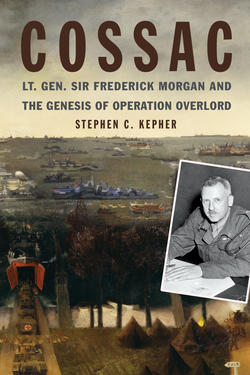Читать книгу COSSAC - Stephen C. Kepher - Страница 10
На сайте Литреса книга снята с продажи.
ОглавлениеPROLOGUE
Winston Churchill wrote that “the history of all coalitions is a tale of reciprocal complaints of allies.”1 The Western Allies of World War II unquestionably fit that description, yet they were also one of the most successful coalitions in modern history. Mid-twentieth-century war was a complex mix of traditional military and naval strategy, combined with new and emerging technologies that promised both new ways to bring the fight to the enemy and potentially dramatic results.
World War II was also a conflict that demanded industrial planning and resource allocation by all the combatants on a scale beyond even that required by World War I (1914–18). Domestic and international politics were also key considerations and influences. The world’s premier power—the British Empire—was joined by two emerging superpowers, the United States and the Soviet Union, both of which would eclipse Britain before the end of the 1940s.
This complex global war required the Western Allies to engage in unprecedented levels of coordination regarding almost every aspect of planning and fighting against the Germans and the Japanese, most obviously in the realm of strategy. Tough decisions had to be made between competing strategies for winning the war: what allocation of resources, for what purpose, against which enemy, how, when, where, and by whom.
Consequently, the British and Americans established mechanisms to facilitate planning and communication, starting with the Combined Chiefs of Staff (CCS). Composed of the service heads of the U.S. and UK armed forces, along with supporting staffs, the CCS evolved into an effective means of waging the war against the Axis. Britain had broad experience of coalition warfare—both good and bad—during the 150 years or so leading up to the alliance with the United States and Soviet Union: against Napoleon, in the Crimea, and in World War I. The United States, by comparison, had little experience, except as an Associated Power for the last year of World War I. In the beginning, the difference was obvious.
Meetings between British and American military planners began before U.S. entry into the war, starting in January 1941 in Washington, D.C. At these meetings, planners agreed to an exchange of military missions (of both naval and army officers), and in May 1941 the U.S. Army Special Observer Group was formed in London, joining Adm. Robert Lee Ghormley, USN, who had been the special naval observer since the fall of 1940. In Washington, there was the British Joint Service Mission, which represented the British Chiefs of Staff. “With the establishment of these ‘nucleus missions’ the exchange of views between the British and American staffs became continuous, and the problems of coalition warfare came to be a familiar part of the work of American planners.”2
After U.S. entry into the war, nine interallied conferences were held between December 1941 and July 1945, to debate and reach agreement on what the strategy of the Western Allies should be. It was at these conferences that the discussions over priorities and allocation of resources played out. It is rare for allies to devote so much time to the coordination of effort over so long a period. Given that Great Britain and the United States were essentially equals with different strategic priorities, it isn’t surprising that there were serious differences of opinion over complex issues that took time to resolve while circumstances and context kept changing.
The change in circumstances became clear over the course of 1943, as was reflected in the narrative of the five conferences held during that year. The story of COSSAC is intertwined with that narrative. How the Allies got there and what happened next is where we begin.
